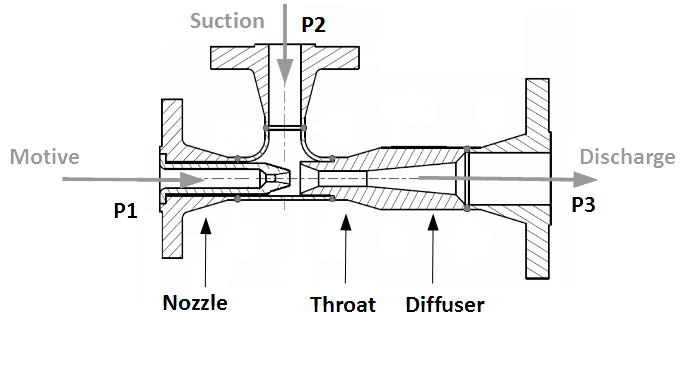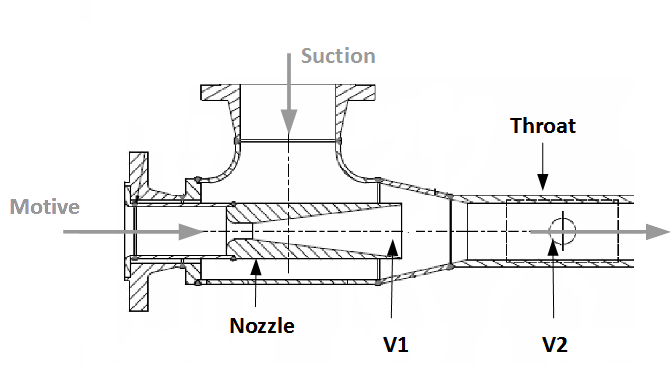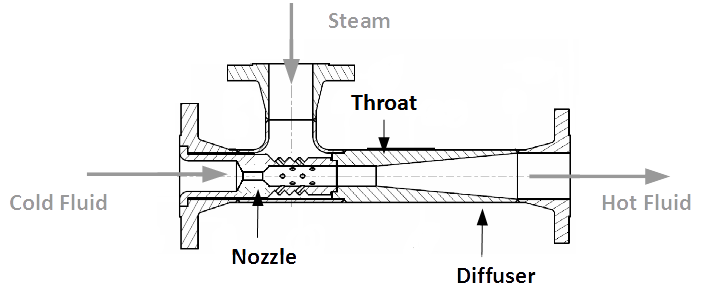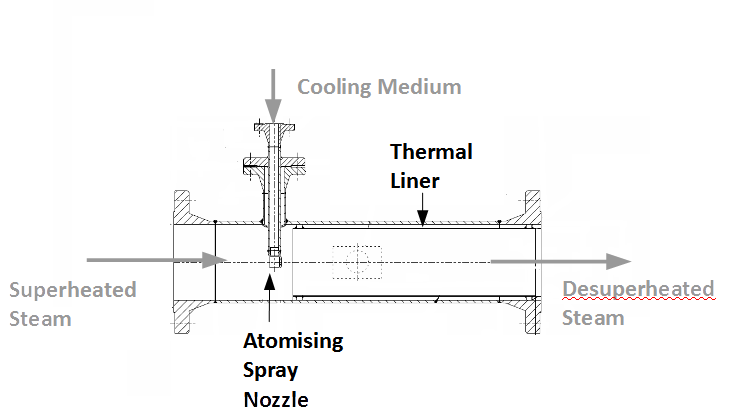As everything Morris Ejector Technologies manufactures is custom designed individual applications need to be assessed on a case by case basis for suitability. However the following information should provide some further understanding of the theory behind how our Eductors, Ejectors, Heaters and Desuperheaters work and operate.
Ejectors operate by using gaseous fluids, such as steam or air as the high pressure motive fluid to create vacuums as well as to pump, compress and boost secondary low pressure gases. How an ejector works is again based on the venturi principle and is relatively straight forward as follows:
- The high pressure motive fluid is passed through the ejector's motive nozzle which accelerates the fluid up to sonic velocities where 'choke flow' occurs. This increase in velocity causes adiabatic expansion of the motive gas from the motive pressure to the design suction pressure.
- As the high velocity motive fluid exits the motive nozzle (V1) it draws in and entrains the suction fluid where an impulse transfer of energy occurs between the two fluids. The throat section of the ejector is designed for a specific suction load at the required discharge pressure. This is achieved by designing the throat diameter so that as the two fluids mix they are travelling at sonic velocities (V2) and therefore at 'choked flow' conditions.
An Ejector therefore is designed on the two choke flow principle.
- As with the Eductor the diffuser section gradually increases in diameter and allows pressure recovery to occur. Depending on the pressures and flow rates, compression ratio's of up to 10:1 between the suction and discharge are possible in a single ejector. If greater suction pressures are required multiple ejectors can be installed in series.
- Steam ejectors and thermocompressors, or ejectors which handle other condensable gases, will require an intercondensor between each ejector stage to 'knock out' the condensable fluids. This allows smaller ejectors to be used and minimises the motive requirements at each stage. Ejectors which are handling non condensable gases therefore tend to be larger and require a greater motive pressure and flowrate as the suction load progressively increases from stage to stage.
Applications include evacuating vessels, creating process vacuums, priming systems and recovery of waste gases / steam as well as dilute phase pneumatic conveyance. of solids.
How they work - Instantaneous / Inline Steam Heaters
How a steam injection heater works is very simple and the principle of operation is very much as the name implies.
- By using the venturi principle we can reduce the pressure of any liquid which has Newtonian behaviour, water for example, to below that of any available heating steam.
- This drop in pressure allows the heating steam to enter the Injection Heater and mix with the liquid. A specially designed throat section ensures a high level of turbulence and promotes rapid and homogeneous mixing of the steam with the liquid.
- The steam transfers its energy, heat, to the liquid and condenses as it cools so that it exits the Injection Heater as a single phase, higher temperature liquid.
As with an Eductor the liquid passes through a diffuser section which reduces the fluid velocity and allows some pressure recovery back up to or near the initial pipeline pressure.



